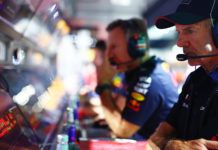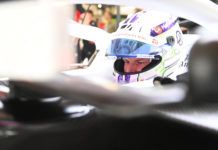The FIA has revealed details of how they view the 2020 F1 race weekends with personnel involved plus tyre testing for 2021/22 and more.
Over the past several weeks, it has become abundantly clear that, for at least some races of the F1 2020 season, fans will not be in attendance due to the COVID-19 pandemic’s profound impact on racing and the world as a whole.
And, while optimism remains that only a limited few rounds will have truly limited personnel, the FIA has accounted for ‘closed’ events in their revised 2020 F1 regulations, and clarified the details of what such a designation entails.
As stated in article 21.6 of the revised rules, each event deemed ‘closed’ – where fans are not allowed – mustn’t have in excess of 80 staff members per team on the grid, 60 of whom can have car-related duties in the event, until 45 minutes prior to the race start.
At this point, the number of those working on the cars is unlimited up to the 80-person maximum. The ‘open’ events will be deemed as normal where fans are allowed, but there will still be restrictions for F1 personnel in terms of marketing, hospitality, etc.
Here’s the revised regulations for 2020 F1 season only:
21.6 a) For the purposes of this Article 21.6 only:
i) a Closed Event will be determined at the sole discretion of the FIA and the CRH and
will be defined as one which does not permit spectator access; ii) an Open Event will be determined at the sole discretion of the FIA and the CRH and will be defined as one which does permit spectator access.
b) From the start of the an Open Event until two hours after the start of the race, no competitor may have more than a total of 60 team personnel who are associated in any way with the operation of the cars within the confines of the circuit. However, during the period starting 45 minutes before the start of the first formation lap until 15 minutes after the scheduled start of the race the number of such operational personnel is unlimited. For the avoidance of doubt staff whose duties are solely connected with hospitality, team
motorhomes, sponsors, marketing, public relations, security or driving trucks to or from
the Event are not considered operational personnel.
In addition to the 60 personnel described above each competitor will be allowed six
individual exceptions during a Championship season for trainee personnel, however, no
individual trainee may attend more than two Events in this capacity.
c) From the start of a Closed Event until the declaration of the official classification of the
race, no competitor may have more than a total of 80 team personnel within the confines
of the circuit. No more than 60 of these team personnel who are within the confines of
the circuit may be associated in any way with the operation of the cars. For the avoidance
of doubt staff whose duties are solely connected with hospitality, team motorhomes,
sponsors, marketing, public relations, security or driving trucks to or from the Event are
not considered operational personnel.
d) A list of all operational, exempt, trainee and single race personnel must be submitted to
the FIA prior to each Event using the official template that may be found in the Appendix
to these Sporting Regulations.
F1 tyre testing for 2020, 2021:
The FIA has also modified the testing rules for both 2020 and 2021 F1 seasons – where the former will see test for 2021 tyres and the latter to see testing for 2022. For the former, since the cars remain largely same from one season to another, no extra days is allowed.
Instead, the FIA will give 30 minutes of tyre test during the second practice session (the last 30 minutes of the session). All F1 teams will have to test with only exclusion for cars having had major damage due to a crash or an incident.
Even though the compounds are to largely remain the same for 2020 and 2021, Pirelli can still make some adjustments, for which, they will get the above time. The rest of the testing rules for 2020 remains the same, especially with post-season running.
Regarding 2021, where teams are to test the new 18-inch 2022 compounds, the rules will see running of two cars simultaneously banned in the post-season test, where only cars from the 2018-2021, retrofitted to support the 18-inch will be permitted.
Of the three days for the post-season test, one day for young drivers will be mandated in 2021, while one day has to be reserved for its regular driver. While 2020 will see no in-season testing, the 2021 season will have the usual 25 days given to Pirelli.
For the in-season tests, cars from 2018-2020 will be allowed, where it has to be modified to suit the 2022 18-inch tyres. Pirelli had planned an extensive test for 2020 which seems like will be utilised next year – they could only stage one run with Ferrari before 2020.
PU homologation, penalties for engine parts:
The 2020 F1 regulations has also brought changes to power unit homologation, where the current cycle has been extended until 2025 season, which was to end this year. It means, manufacturers’ won’t be allowed to a larger change in parts.
In terms of penalties, the FIA has revised the scheme for 2020 and also 2021. Due to a scenario where less number of races may take place this year, the number of parts will see a change, all of which will not be carried forward next year.
The usual rule is for three engines (ICE), motor generator units-heat (MGU-H), three motor generator units-kinetic (MGU-K) & turbochargers (TC), two energy stores (ES) & control electronics (CE), during a season, anymore of each, will result in a penalty.
For 2020, they have altered the numbers, keeping in mind the number of F1 races. In case of 14 or less championship events in the season, drivers will be allowed to use two ICE, MGU-H, TC, CE and MGU-K – anymore will result in penalty.
At the same time, in the case of 11 or less championship events in the season, drivers will be allowed with two ICE, MGU-H, TC & MGU-K, while one ES & CE. On the other hand, for 2021 F1 season, it will revert to the normal regulations.
In addition to the usual rule for more than 19 F1 races, they have added eight sets of exhaust systems as a limitation – which is a new rule. In the case of 19 races or less, the rest will remain the same, with just MGU-K being limited to two.
Here are the revised 2020 Technical Regulations: 2020 Formula 1 Technical Regulations – 27/05/20
Here are the revised 2021 Technical Regulations: 2021 Formula 1 Technical Regulations – 27/05/20
Here are the revised 2020 Sporting Regulations: 2020 Formula 1 Sporting Regulations – 27/05/20
Here are the revised 2021 Sporting Regulations: 2021 Formula 1 Sporting Regulations – 27/05/20
Here’s the full story on the FIA changes for F1 2020, 2021 and beyond



















